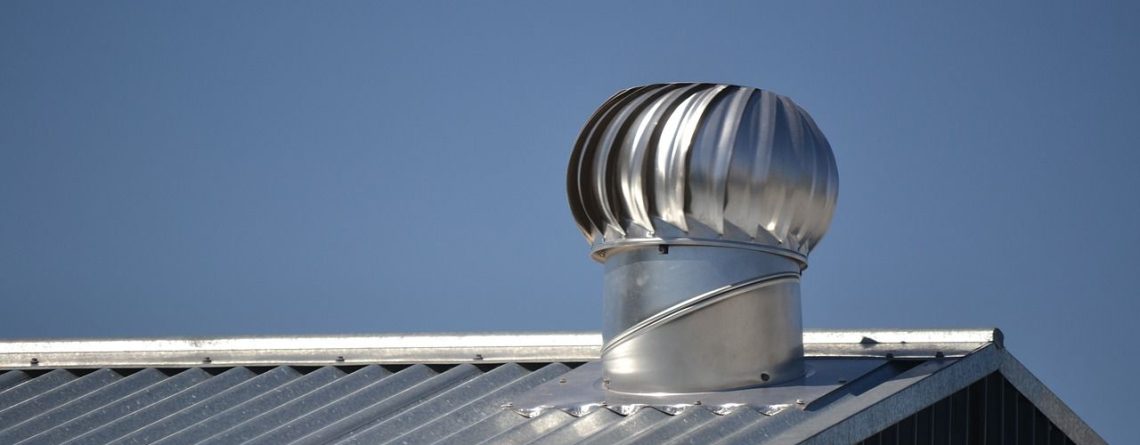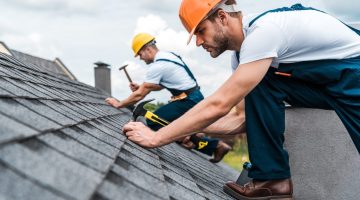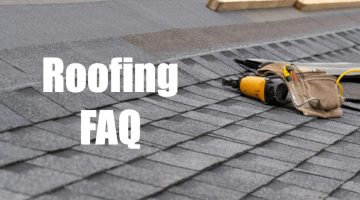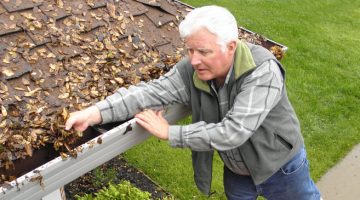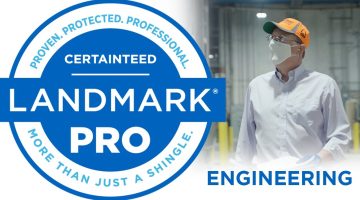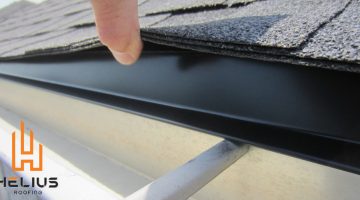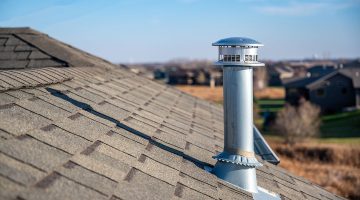By Helius Roofing & Construction
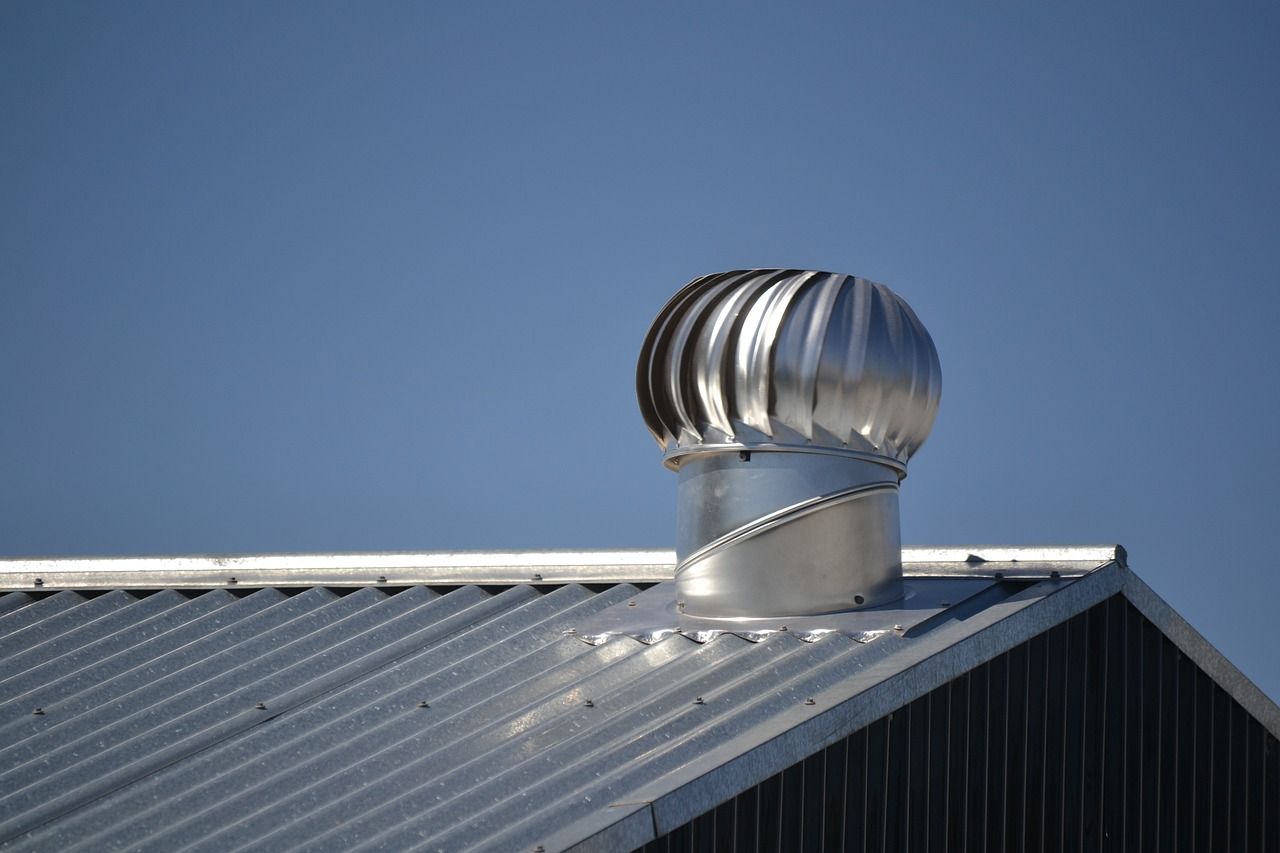
Metal buildings have become a popular choice for various applications, from warehouses and garages to workshops and agricultural facilities. Their durability, cost-efficiency, and adaptability make them an excellent investment. However, one crucial factor that is often overlooked is proper ventilation. Adequate ventilation is essential for maintaining a comfortable, energy-efficient, and safe environment inside the building. Without it, you may face a host of problems, including condensation, moisture buildup, poor air quality, and even structural damage.
In this article, we’ll explore why proper ventilation is critical in a metal building and how it can enhance the performance and longevity of your structure.
1. Prevention of Condensation and Moisture Buildup
One of the biggest challenges in any metal building is dealing with condensation. Metal surfaces are prone to condensation when the temperature inside the building is significantly different from the outside environment. As warm air cools down when it comes in contact with the cold metal surfaces, moisture forms, which can lead to a range of issues if not properly managed.
Excessive condensation can cause the following problems:
- Rust and Corrosion: Moisture is the primary cause of rust, which can degrade the integrity of the metal structure over time. Even galvanized or coated metal surfaces can eventually succumb to rust if they are constantly exposed to moisture.
- Mold and Mildew Growth: In humid environments, moisture buildup can foster the growth of mold and mildew, which can damage stored items and create an unhealthy living or working environment.
- Damage to Insulation and Interior: Over time, condensation can damage insulation and other interior materials, reducing the building’s energy efficiency and increasing the risk of structural issues.
Proper ventilation helps by allowing the warm, moist air to escape and cooler, drier air to circulate through the building. This reduces condensation and keeps moisture levels under control, extending the life of the metal and maintaining the overall structural integrity.
2. Regulating Temperature
Another important reason for proper ventilation in a metal building is temperature regulation. Metal structures tend to heat up quickly in the sun and cool down just as fast when the sun sets or in colder weather. Without proper airflow, the interior of a metal building can become unbearably hot in the summer and excessively cold in the winter, leading to discomfort and higher energy costs.
Effective ventilation systems allow for air exchange, which helps regulate the temperature inside the building. Ventilation can mitigate the heat buildup during hot months by releasing warm air and drawing in cooler air from the outside. In colder months, good ventilation prevents the air inside from becoming too stale and helps maintain a more even temperature throughout the building.
3. Improved Air Quality
Air quality is another critical aspect that proper ventilation can address. Whether the metal building is being used as a workspace, a storage unit, or for agricultural purposes, having a consistent supply of fresh air is important. Stagnant air can lead to the accumulation of dust, allergens, fumes, and other pollutants, which can be harmful to those working or spending time inside the building.
For buildings used in manufacturing, automotive repair, or any other activity that produces fumes or gases, ventilation is crucial for maintaining a healthy indoor environment. Without proper air circulation, fumes and toxic substances can build up, creating hazardous conditions. Ventilation systems help remove these pollutants, improving the air quality and ensuring a safer working environment.
For agricultural buildings, such as barns or livestock shelters, good ventilation ensures that ammonia, dust, and humidity levels are kept in check, creating a healthier environment for animals and workers alike.
4. Energy Efficiency
Ventilation plays a key role in the overall energy efficiency of a metal building. Without proper airflow, the temperature inside the building can fluctuate dramatically, forcing heating and cooling systems to work harder to maintain a comfortable temperature. Over time, this leads to higher energy consumption and increased utility bills.
By promoting natural air circulation, proper ventilation reduces the reliance on mechanical heating and cooling systems. In warmer climates, ridge vents, louvered vents, and exhaust fans can help release hot air, while intake vents allow cooler air to flow into the building. In colder environments, ventilation ensures that heat is evenly distributed and prevents moisture buildup that can reduce the effectiveness of insulation.
An energy-efficient building not only saves on operational costs but also has a lower environmental impact, making it a smart choice for both your wallet and the planet.
5. Prevention of Structural Damage
While metal buildings are known for their strength and durability, they are not immune to damage caused by moisture and poor ventilation. When condensation forms on metal surfaces, it can lead to rust and corrosion, which weakens the structural integrity of the building. Over time, this can result in costly repairs or even the need for complete replacement of certain components.
In addition to rust, excessive moisture can cause damage to the insulation, foundation, and interior finishes of the building. Poor ventilation can also lead to thermal expansion and contraction of metal panels, which may cause warping or loosening of fasteners.
By ensuring proper ventilation, you can prevent these issues and protect your investment. A well-ventilated building will maintain its structural integrity for longer, reducing the need for frequent repairs and prolonging the life of the building.
6. Types of Ventilation Systems for Metal Buildings
There are several different types of ventilation systems that can be used in a metal building, depending on the building’s size, use, and location. The most common ventilation options include:
- Ridge Vents: Ridge vents are installed along the peak of the roof and allow warm, moist air to escape from the building. This is particularly effective in warmer climates where heat buildup is a concern. Ridge vents are passive systems, meaning they rely on natural airflow and do not require electricity.
- Louvered Vents: These vents are typically installed in the walls of the building and allow fresh air to enter while letting stale air exit. Louvered vents are often used in conjunction with ridge vents to create a continuous flow of air through the building.
- Exhaust Fans: Exhaust fans can be installed to mechanically remove air from the building. This is especially useful in areas where natural ventilation may not be sufficient, such as in manufacturing facilities or workshops where fumes and pollutants need to be quickly removed.
- Cupolas: Cupolas are small structures placed on the roof of the building that allow air to escape. They are often decorative but also serve as a functional part of the ventilation system.
- Soffit Vents: Soffit vents are placed under the eaves of the roof and help draw cooler air into the building, creating a natural flow of air when used in combination with ridge vents or other exhaust systems.
7. Ventilation for Specific Metal Building Uses
The type of ventilation required for a metal building depends largely on its intended use. Here are a few considerations based on common applications:
- Workshops or Garages: In these settings, where vehicles, machinery, and tools are used, ventilation is critical for removing fumes, dust, and exhaust gases. A combination of ridge vents and exhaust fans may be ideal.
- Agricultural Buildings: For barns, greenhouses, or livestock shelters, proper ventilation is crucial to maintaining air quality and regulating humidity. Louvered vents and cupolas can help keep the air fresh and prevent the buildup of harmful gases.
- Storage Buildings: Although storage buildings may not have the same ventilation needs as occupied spaces, it’s still important to prevent moisture buildup and protect stored items from rust or mold. Passive ventilation like ridge and soffit vents can help maintain a dry environment.
Conclusion
Proper ventilation is essential for maintaining the health, safety, and longevity of a metal building. By preventing condensation, regulating temperature, improving air quality, and enhancing energy efficiency, a well-ventilated building is more comfortable and cost-effective to operate. At Helius Roofing & Construction, we understand the importance of proper ventilation and can help you design and build a metal structure that meets your specific needs. Contact us today to learn more about our metal building services and how we can ensure your building is properly ventilated for optimal performance.

